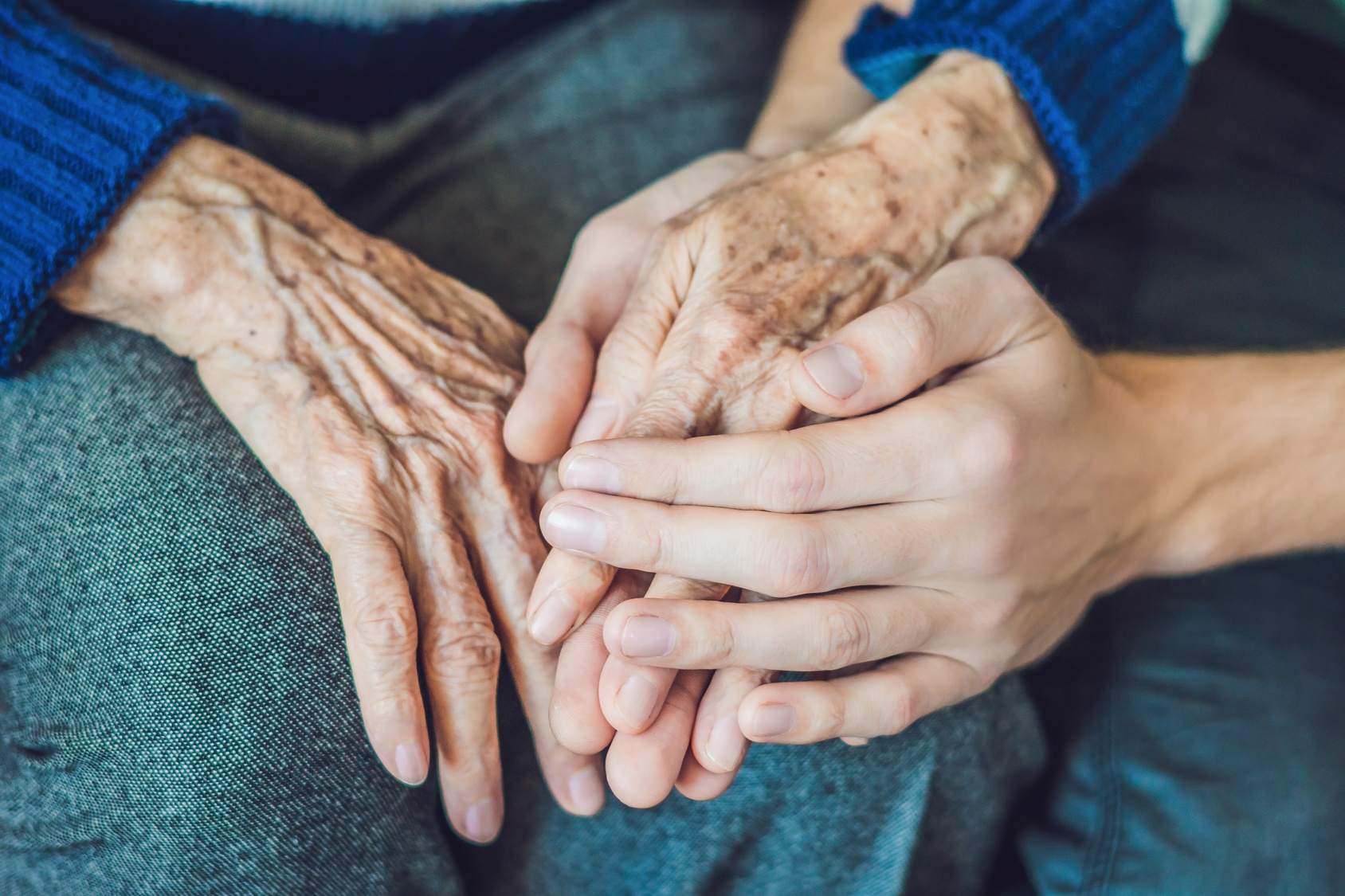by Kimberly Spering, MSN, FNP-BC
How do you ask patients about end-of-life wishes? I think this is a difficult question… with difficult answers. Truly, end-of-life discussions are fraught with angst, sometimes anger, hopelessness… but sometimes, they can lead to hope, and a willingness to discuss goals of care.
“Crucial conversations.” These are the questions that providers ask, trying to elicit patients’ goals of care, fears or concerns, hopes and wishes, and wants for their end-of-life. These are oh-so-important conversations with people… yet, so few providers really ASK the questions… or listen to the answers. I fully understand this. In the busyness of a day, with metrics to meet, tons of patients to see, conversations that take time are… difficult. And uncomfortable. However, they are still important.
For me, it’s been an interesting few days, to say the least. I held hospice discussions with many patients — two signed on in the past few days, and one most likely will do so.
The first patient has fought two different cancers over the past two years. When I met her 10 months ago, she expressed a desire to pursue treatment – so long as the side effects weren’t worse than the disease itself. At that time, and in the months following that visit, I would routinely question what her wishes were. Until the visit this week, nothing changed.
Fast forward to seeing her this week. She was beyond emaciated. More weight loss… but yet, she had large amounts of peripheral edema due to her albumin being super-low. Her oncologist prescribed Lasix… which worked briefly, then had no effect. She had almost every side effect to her chemotherapy that could happen. Yes, she had medications to off-set side effects, but those meds had side effects as well.
In short, she was suffering greatly.
I noted her worsening cachexia, dark circles under her eyes, unsteadiness on her feet. “Tell me how you are doing,” I asked, guessing full-well that I knew what horrors she experienced.
“I’m DONE. I’m FINISHED fighting this cancer. I stopped my treatment one week ago,” having stopped the two medications designed to fight it.
She was resolute. We discussed her side effects, her quality of life (which was non-existent at this point), and her goals of care.
“I don’t want to die at home. He (her husband) can’t take care of me.” We discussed that inpatient hospice was for patients with uncontrollable symptoms or a limited (2-week) life expectancy, or for management of uncontrolled symptoms. It is NOT, however, for patients with a longer time to death. She wasn’t willing to consider an assisted living or skilled nursing facility. I discussed what home hospice would entail for her, with as much support as needed.
Ultimately, I connected with hospice and had services initiated.
Another patient has severe aortic stenosis, diastolic CHF, CAD, CKD 4, and a plethora of other co-morbidities. I met her several years ago, and surprisingly, she has done well for the past several years… until four months ago. She has had increasing chest pain, worsening CKD, esophageal dysmotility, and a bunch of other symptoms.
During my last visit, I floated the idea of hospice to her daughter and son-in-law, given the progressive decline I’d observed. We talked at length, but held off. Today, her daughter wanted to discuss hospice again. The patient had been to the ED & hospice was discussed with another family member.
After a robust, engaging conversation with her daughter today, I approached the patient.
We discussed the course of her disease processes over the past few years, particularly the past few months. Initially, she felt she should return to the hospital for urgent treatment. “Doesn’t everyone go to the hospital if in trouble?” she asked.
Well… no, I explained, people don’t HAVE to go. We discussed her goals of care and desires for comfort over treatment. Her AS and CKD really limited her treatment options. Diuretic increases would worsen her renal function. BP modifications could decrease her cardiac output and worsen her AS.
So… in the realm of “treat everything,” what does one do?
One option is to offer hospice as an additional option for 24/7 support. I described their services, the concerns I had that her going back to the hospital would offer limited treatment options, and their desires for extra support and aggressive symptom management.
We had a lively discussion of what that would entail. Ultimately, the patient and her family will discuss the pros/cons of hospice, and let me know if they want to start those services.
My last patient was a WWII veteran, married for 72 years, and a wonderful story-teller. Someone with ESRD, combined CHF, atrial fibrillation, and a plethora of other health problems. I spent a lot of time listening to his war stories… which over time, included his PTSD (called “shell-shock” in those days). His wife told me privately he had never shared any of his experiences with her. After his retirement, he spent years being an auctioneer… until his eyesight failed, rendering him unable to read the bids.
Over the years that I saw him, I loved listening to his stories: stories about the war, stories about his family, heart-break when family members died unexpectedly, worries about his wife’s health issues (only spoken when we were alone). We discussed his progressive disease, including CHF, ESRD, atrial fibrillation, etc. I watched, as time took its toll on this soldier.
Today, I came to his home, only to find him bed-bound, on oxygen, and extremely weak. “What happened?” I exclaimed. He was discharged home from the hospital a few weeks previously, but not in this state.
I discovered that his cardiologist (not part of our hospital network) had ordered oxygen last week. I had no notes… no idea of what had transpired. His wife was of limited help, due to her own memory issues.
Quickly, I called my staff to get records ASAP. I did an immediate assessment – nothing unstable, but still… his respiratory rate was elevated. He had pain in certain areas. He was only voiding 1–2 times daily (this… for someone with prior nocturia 3 times nightly, and voiding every 2 hours while awake). He wasn’t eating or drinking.
In my assessment, he was starting the process of actively dying.
We discussed his disease progression, his declining status, his goals of care, his fears and hopes. His biggest worry: “I want to make sure that she (his wife) is alright.” He was worried about the dying process, but acknowledged that it was his time. Meanwhile, his wife, teary-eyed, told me that their daughter was of limited support, and that she could not rely on her. She only had a nephew and nieces – both of whom support was limited.
We discussed his situation and symptoms, symptom management, spiritual concerns, and we did a life review. For those unaware of the latter, it is a discussion of all of the things that a person has accomplished or succeeded at over the course of his/her life. It is profoundly moving, and often facilitates a patient’s acceptance of their end-of-life status. I reminded him of the stories that he shared over the past year or so. We chucked at some of his jokes. I laid on their bed, as he was extremely HOH, talking about these stories.
At the end, I asked him what he wanted most. His biggest concern was that his wife would be OK, able to function on her own. She teared up, but told him she would be OK.
I kissed him on his forehead and gave him a hug, telling him that I wanted him to rest. Hospice would be coming shortly, and he needed to regain some energy.
He thank me for all of my care, then told me, “See you down the road.”
I choked up, swallowing back tears. “I love that. I’m going to remember that and use it,” I managed to get out. Then, as I smiled at and hugged him, I left the room, tears swimming in my eyes.
His wife followed me. I spent another 30 minutes talking to her, trying to help her cope with the upcoming loss of someone so dear… trying to help her realize that she was not alone. Trying to help her elicit hospice support when it started.
“Will you come to see me? I have no one…” she stated.
You bet I will. Patients/families like this are few and far between. I will try to see all of the people that I’ve followed… even if I can’t be their NP. Sometimes, just being a friendly face helps.
I just LOVE being able to connect with people, sharing their stories over time. But it is so incredibly hard to direct people to the realization that they are at the end of their life. That disease-directed therapy is not working. That hospice-supportive care is the way to go to support their end-of-life needs.
In my palliative work, I am blessed in having the time to discuss these issues over time with patients and families. I am blessed to have the medical foresight to help predict their course of illness.
Death has its own timetable. It waits for no one. It is the one INEVITABLE outcome for all of us — the timing or reason unknown for most. I can estimate when the end will occur, but a higher being only knows when that occurs (God for some, HaShem for others, Allah for some, etc.).
I’m going to shout out to my hospice and palliative medicine colleagues here. They have helped initiate needed services. They work tirelessly in the trenches for patient care. They support us when needed.
Ultimately, patients and families can be supported, even when death is imminent… or prolonged.
What does a peaceful death look like to patients? Or you? Are health care providers and families willing to ask the hard questions: their goals of care, fears or concerns, wishes/bucket list items? These are tough conversations, but crucial ones.
Let’s honor patients’ wishes, by supporting them, asking the tough questions. Asking their goals and wishes, fears and concerns, what is most important to them, what is crucial to living their lives, and also, who is their support.
And a hearty, “see you down the road” as well.
Kim Spering has been a nurse for over 25 years and worked as an NP over the past 15 years in Family Medicine, Women’s Health, Internal Medicine, and now Palliative Medicine. She serves as an editorial board member of Clinician 1 and submit blogs to the website, with a goal of highlighting both the clinician and patient experience in health care.
Disclaimer: The viewpoint expressed in this article is the opinion of the author and is not necessarily the viewpoint of the owners or employees at Healthcare Staffing Innovations, LLC.








